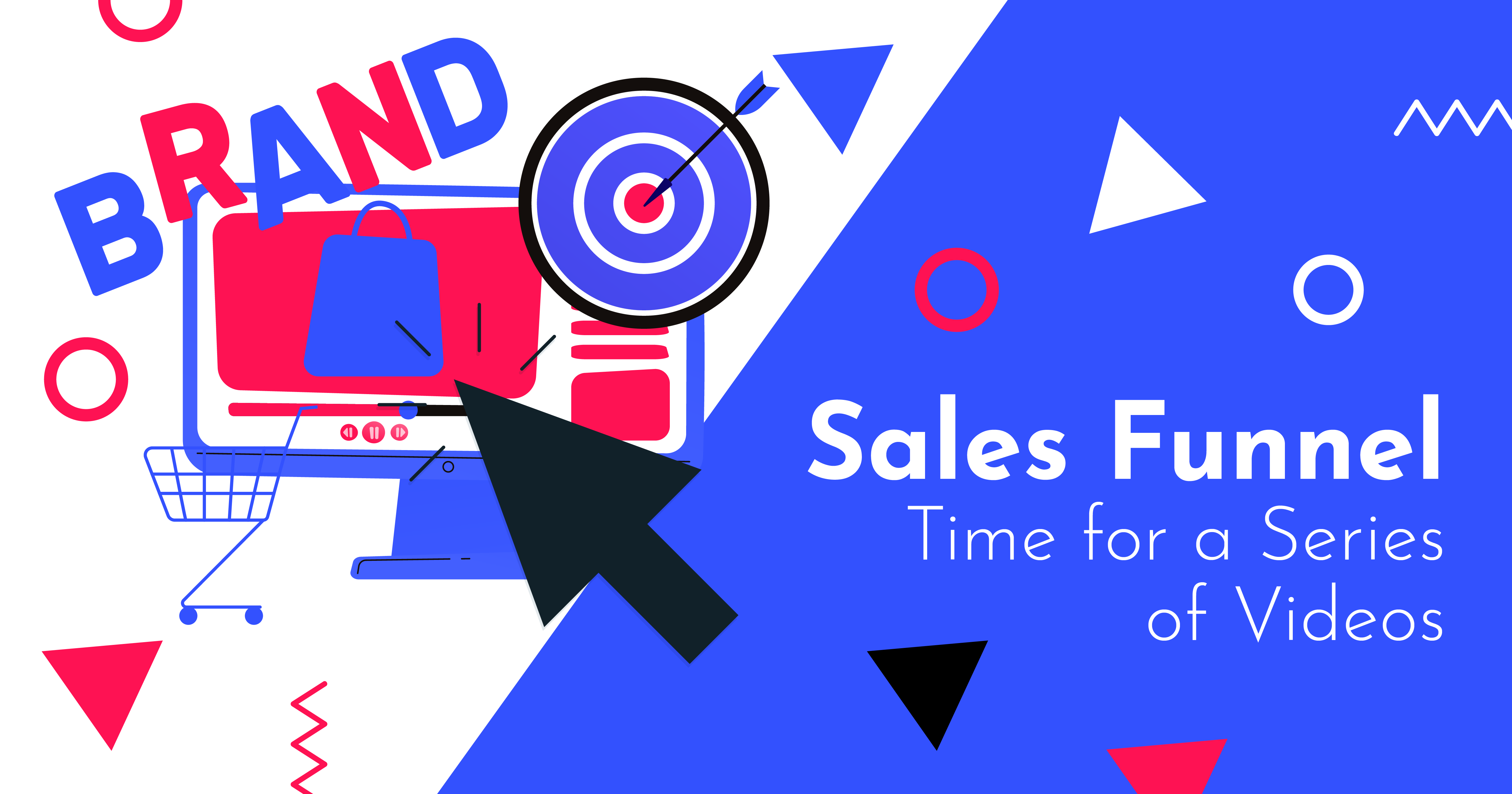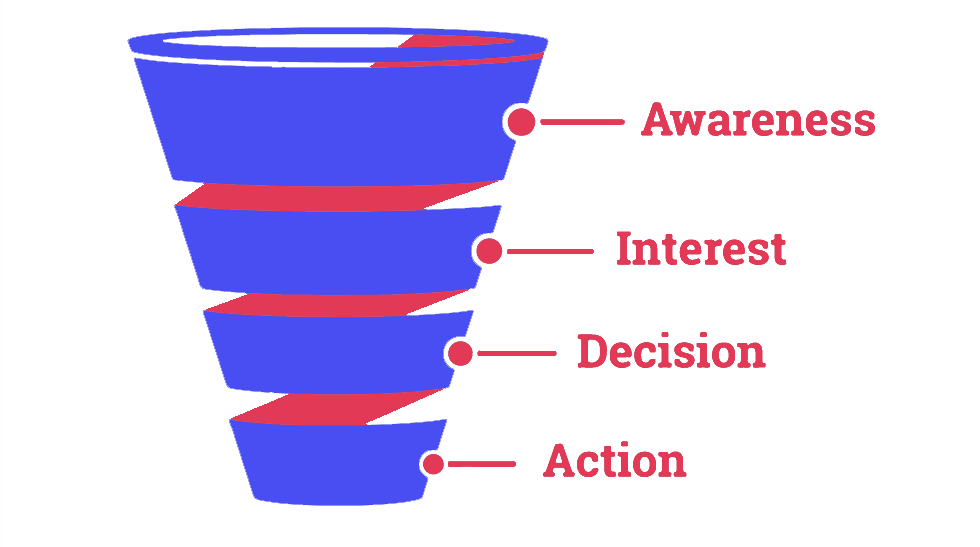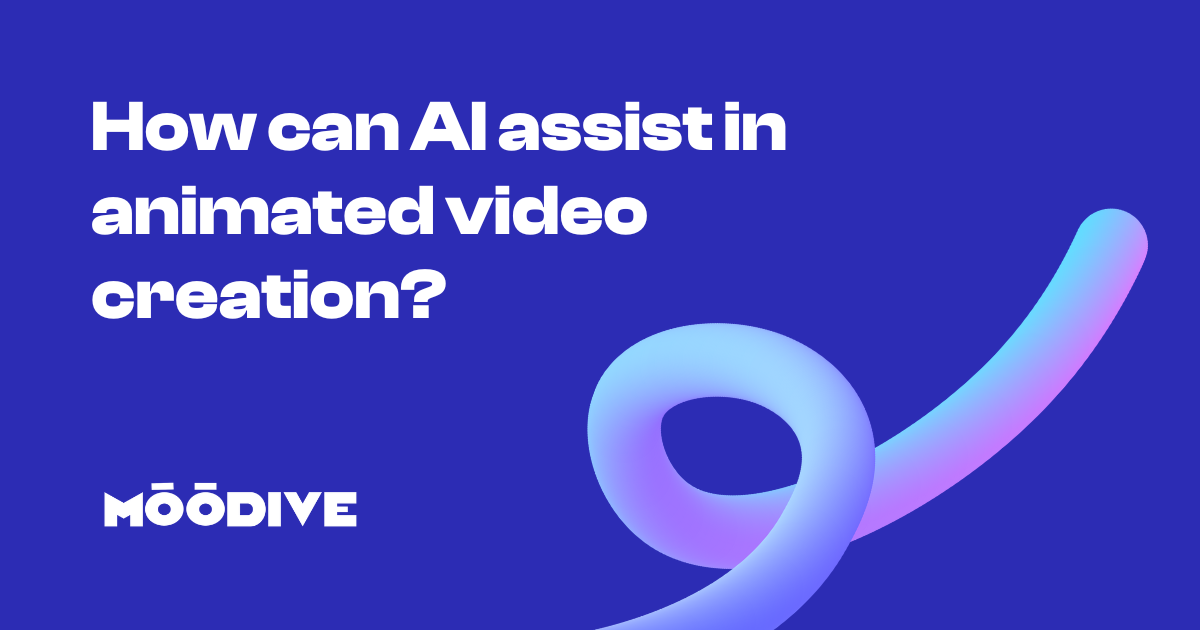Do you know what a sales funnel means and how it can help you to boost your video marketing? Let’s take a closer look and explain how to get the most out of it, revive your communication and get the attention of a really wide audience.
In a nutshell, the sales funnel means the customers’ journey from their first contact with your brand/product/service i.e. from raising the awareness to performing the desired action. As you can see in the picture above, it consists of several parts or more precisely stages.
So, to achieve the expected goals, you need to choose different information in each part of the funnel that you want to tell your audience. Advertising videos, or as the case may be, a series of videos can serve very nicely in this case, you can set them so that you reach your target audience and elicit the desired reactions.
A properly set up video campaign can not only address, but also capture your customers’ attention or enchant them. Let’s imagine that you have several videos that have customized content for each stage of the funnel. You could gradually uncover information, work on a story to continue, … interesting, right?
So let’s now have a look at the individual stages …
1. Stage – Build Awareness of Your Brand
At this stage, the consumer comes into contact with your product or service for the first time. So the most crucial thing is to attract your customers to arouse their curiosity. Videos for this first phase should be no longer than 30 seconds. At this point, the shorter the better; you should say the most important things. You don’t have to explain everything; you will have room for that in the next stages. For example, include short 6-second non-skippable bumpers on YouTube that play before the video the viewer wants to watch.
2. Stage – Arouse Interest
In the second phase, show another video from the series. It is very likely that users who have come into contact with your video in the first stage will be particularly likely to encounter it.
Imagine that you engaged someone’s attention in your short advertising video to such an extent that they clicked on your ad and landed on your website. And so it’s time to say more about the product. You can now use a longer video on a specific website or homepage to describe your product in more detail. Show how it can solve problems, what benefits it brings, why decide for it, etc. Provide all the key information that will convince consumers to buy it.
3. Stage – Evoke Desire
It is essential to realize that not every customer buys right away for the first time. Therefore, it is necessary to arouse their desire for individual features or benefits. Remarketing was devised for this purpose. You can precisely target your video to people who haven’t finished their purchase. In short videos, you will let them hear from you and you will present why they should decide on the product. A suitable format is, for example, TrueView in-stream video that plays before, during, or after playing another video. The user has the option to skip it after viewing it for 5 seconds.
4. Stage – Trigger Action
In the last, and therefore in the fourth stage, the most important thing is to take the opportunity to persuade the user to take the required action – for example, to buy, to register, etc. It often happens that after the user has shown interest in our product, they compare it before the purchase and find out whether it meets their requirements.
In this case, the videos placed on a specific subpage for each product work perfectly. You also get the space to show a simpler processed video, which can take even two minutes, because it specifically describes the features of the product. You show how the product works, what everything it meets. For example, for applications, we can show a more detailed environment, which allows the users to determine whether the application will suit them.
Summary
So if you are planning to launch a novelty, introduce improvements to your product or simply want to fulfill communication plans in the long run, then a series of videos is the perfect tool. What content, or more precisely what flow of information you use is of course up to you. But if you are not completely sure about the creative process, talk to your team about ideas and be sure to get advice from experienced creatives from the industry.





